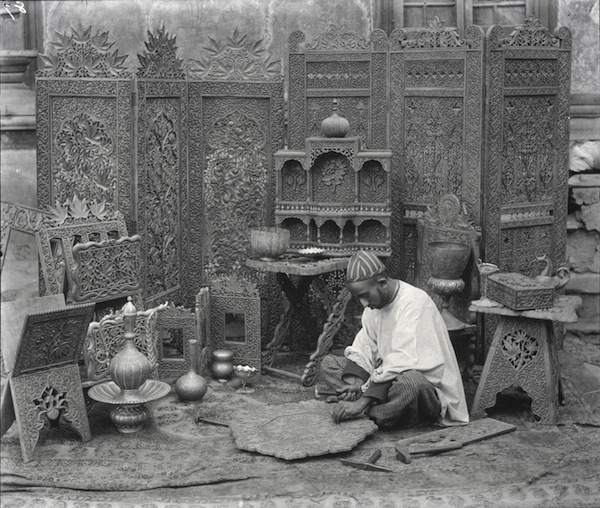Scottish National Portrait Gallery hosts new exhibition about India
A collection of beautiful and rarely seen photographs, which offers a fascinating insight into the role played by Scots in the British Raj, is to feature in a new exhibition at the Scottish National Portrait Gallery from today.
Lucknow to Lahore: Fred Bremner’s Vision of India will chart the remarkable career of Bremner – a commercial photographer who left Scotland for India in 1882 and spent the next 40 years working there. This selection of 24 outstanding images, beautifully printed by renowned photographer Pradip Malde from the original glass negatives, will offer a rich, personal perspective on the people and places that Bremner encountered.
The exhibition will open a season of photography at the Scottish National Portrait Gallery this autumn, which also includes the work of the multi-award-winning Czech-born photographer Jitka Hanzlová, and Leading Lights: Portraits by KK Dundas, which captures many of the stars who have studied at the Royal Conservatoire of Scotland, in Glasgow.

Born in 1863 Aberchirder, Aberdeenshire, Bremner began his career in his father’s photographic studio in Banff, before accepting an offer to work with his brother-in-law G W Lawrie, an established photographer in Lucknow, India. His assignments took him across Northern India, and in 1889 he set up his own studio in Karachi, followed by premises in Quetta in Baluchistan, and in Lahore and Rawalpindi in the Punjab. Travelling incessantly over vast distances, and working in rarely photographed areas, Bremner created a captivating record of Imperial India’s rural life, landscapes and people.
The exhibition will help to illustrate how imperial expansion in the nineteenth century provided photographers with a powerful stimulus, as well as great opportunities and rewards, as they followed in the footsteps of colonial armies, traders and adventurers. Of the British territories, India was the most photographed, and the work of men like Bremner provided knowledge that was vital to imperial interests. His photographs both reveal how British India was imagined and reflect the complex attitudes of its rulers.
Portraiture was the core of Bremner’s business, with regular commissions to photograph not only colonial officers and their families but also members of the native aristocracy: his striking portraits of The Khan of Kalat and his Sons (c.1893) and Nawab Sultan Kaikhusrau Jahan, Begum of Bhopal (1858-1930) (c.1920) are among the highlights of the exhibition. Like many commercial photographers, however, Bremner also found time to complete personal projects. His fascination with the diversity of local customs and his determination to record them can be seen in memorable images of fishermen on the River Indus and the dramatic River crossing, River Jhelum, Kashmir (c.1896).

A skilled craftsman himself, Bremner produced a series of large glass plate negatives showing Indian artisans at work. His photographs of woodcarvers and carpet-makers hint at the material wealth that placed India at the heart of Britain’s colonial economy.
The exhibition will also look at how Bremner (like many of his contemporaries) sought to transpose a European conception of the picturesque onto his photographs the Indian landscape.
Speaking of the exhibition, Sheila Asante, Migration Stories Curator at the Scottish National Portrait Gallery said, “This is a fantastic opportunity to catch a glimpse of rarely seen images of the Indian Empire. Fred Bremner was one of the first photographers to capture the very north-western edge of the British Raj. An accomplished photographer, he had an eye for dynamic compositions. This intimate exhibition of his work offers an extraordinary insight into how one Scot viewed ‘that far off land known as the Indian Empire’.”
LUCKNOW TO LAHORE:
FRED BREMNER’S VISION OF INDIA
6 October 2012 – 7 April 2013
Scottish National Portrait Gallery
1 Queen Street, Edinburgh EH2 1JD
Telephone: 0131 624 6200 | Admission free
www.nationalgalleries.org
